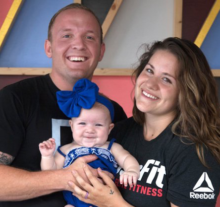Podcasts
Age and Lack of Maintenance
On this episode of the podcast, Chris and Chris talk about something that makes everything fail eventually: Age and lack of maintenance. It’s a concept everyone understands – if you don’t do maintenance, cleaning, adjusting, and testing on a regular basis, things breakdown and wear out. Whether its a car, an HVAC system, an electrical panel, or even your body, everything succumbs to getting older and the lack of maintenance. Your customer needs to be aware of how age and the lack of maintenance affect their systems. Here’s a few tips:
Establish the Ages
Make sure to ask the customer for the age of their home and the age of their system/device/fixture. Also, find out how long they’ve been in the home and how long they plan to be in the home. This will help you set the context and an anchor point for the age of things in the home. You should get this information through a conversation not through an interrogation of the customer.
Quantify the Ages
Most clusters do not consider their HVAC, plumbing, or electrical systems until something breaks. Since this doesn’t happen frequently. They do not have much of a perception of how these things age. To help that perception and give them the proper perspective of the age of their home and systems, always quantify the age. This means that if they give you an age respond with the year. If they give you a year, respond with the age. For example:
You: “This is a great house. How old is it?
Customer: “It was built in 1968.”
You: “Oh, so it’s 52 years old.”
Or
Customer: “Its 52 years old.”
You: “Oh, so it was built in 1968.”
You should do this to help your customer put the age into their personal timeline. When someone hears an age and a corresponding year, it means more to them. They’ll remember something that happened in their life or in general history at that time. It will help them put the age of their systems into perspective. You might even hear something like: “Wow! That was a long time ago! I remember…” This indicates that it is in their personal timeline and they now grasp just how old the system/device/fixture actually is.
How Long Things Last
When you have established the ages and quantified the ages, be prepared to answer “Is that old?” Or “How long do these last?”. Those are natural questions for the customer to ask. You should be ready with the correct and truthful answer. Never use this information to scare or manipulate a customer. A good response is something like this:
“In this area, these usually last between X and Y years with regular annual maintenance.”
You know better than anyone the uniqueness of your area conditions and how long things usually last IF they receive regular maintenance. Be sure to share exactly that.
Last Annual Maintenance and Safety Inspection
Once you have done all of the above, ask the customer for the date of their last annual maintenance and safety inspection:
“What was the date of your last annual maintenance and safety inspection on your plumbing/HVAC/electrical system?”
Most customers will probably say it’s been a few years or they can’t remember. You should respond by reinforcing the need for annual maintenance and safety inspections.
Use Physical Evidence
Finally, after doing all of the above, use actual physical evidence to prove that the system is dirty, the part is worn out, or something is becoming unsafe. Of course, you only use the truth. Show them the worn part, the dirt from a coil or the sediment in the water heater, or the expiration date of the smoke detectors. Seeing is believing.
As things get older they wear out. They wear out faster if they are not maintained and inspected regularly. Everyone knows this about common things like cars, tools, etc. but most homeowners still don’t know this about their mechanical systems. Use the above tips to help you educate and reinforce how age and lack of maintenance make things break down sooner and cost them more money.
Subscribe to never miss an episode:
What SETs Us Apart?
Proactive Business Plans
A proactive business is a successful business. That's why our team takes the time to make sure every client has a proactive, not reactive, business plan. Our strategies make your business run more smoothly and profitable.
Proven Results
Our training services help businesses identify and achieve their key performance indicators (KPIs). Whether it's increased revenue or higher satisfaction rates, our methods allow you to see immediate and continued results.
Personalized Training
Our team of experts works hard to make sure your business gets personalized training. We'll work with your team one-on-one or in group settings to set and achieve your business goals. We develop training based on your goals!
Prioritizing People
We believe that people are the most valuable asset. We strive to provide outstanding benefits, life balance, leadership, and support to our team. We believe in helping people reach their greatest level of growth, contribution and satisfaction.

Trusted By
Business Ignition
SPARK
Classroom Training
Resources
Company

Join our newsletter











